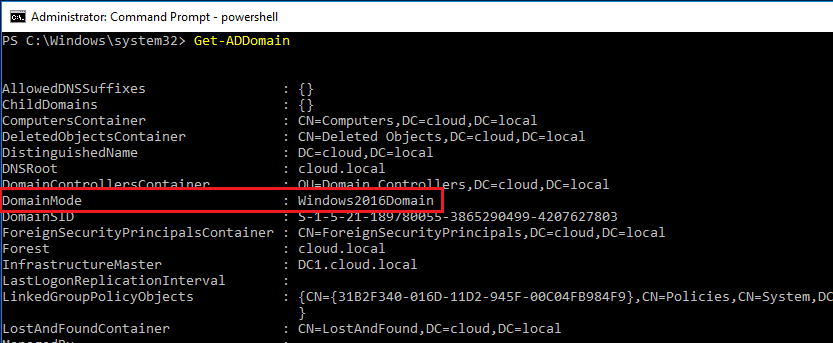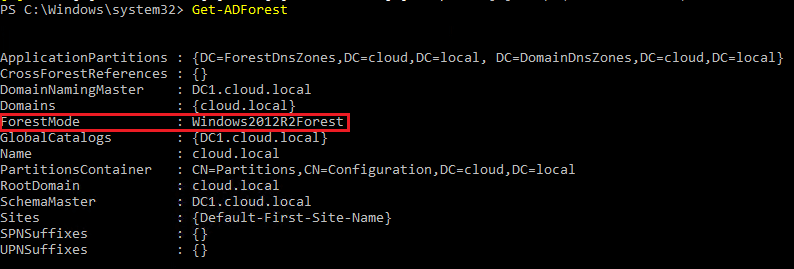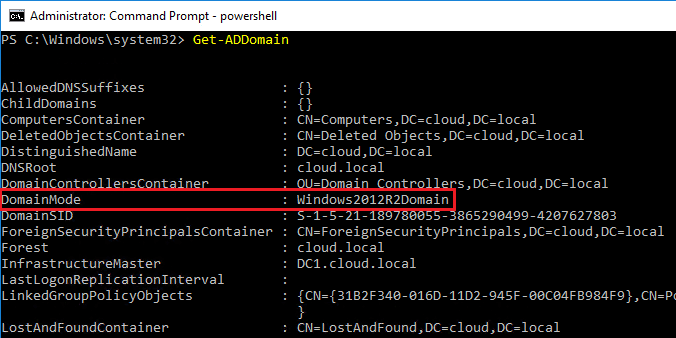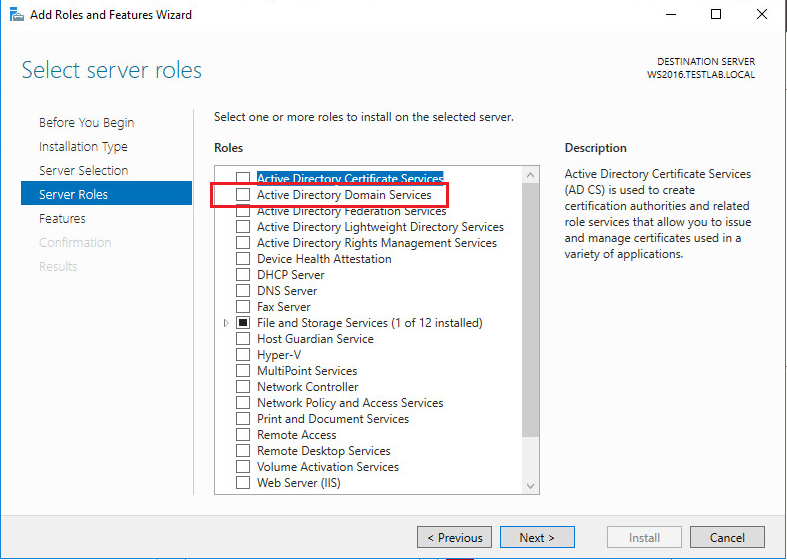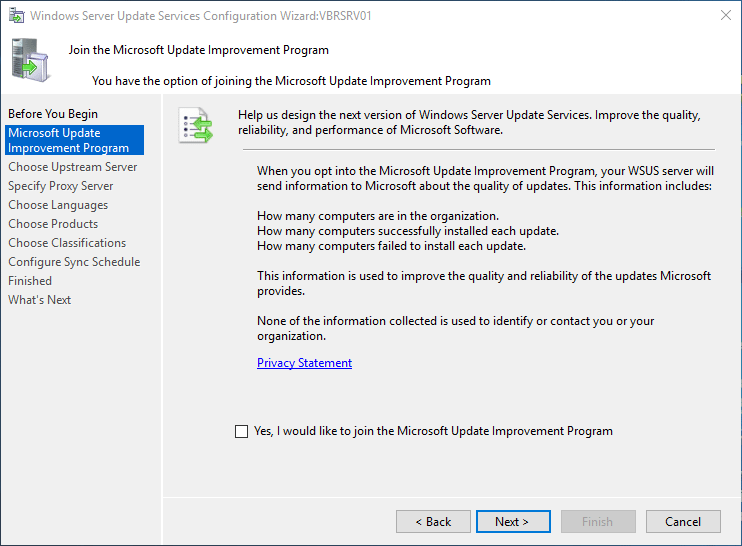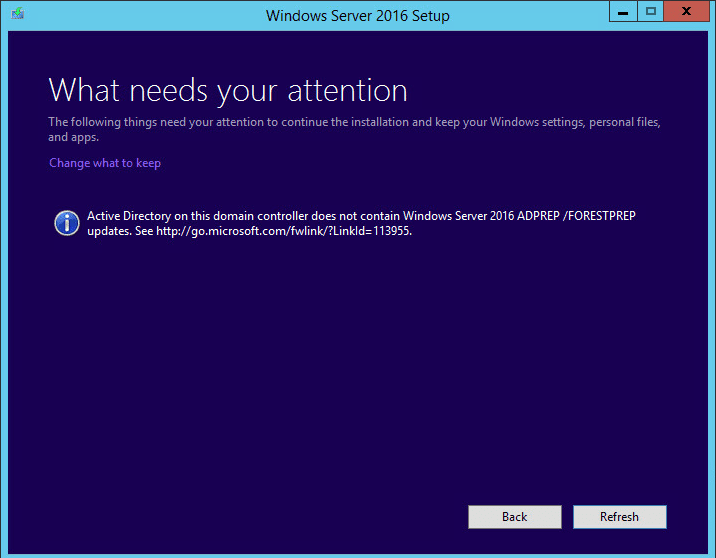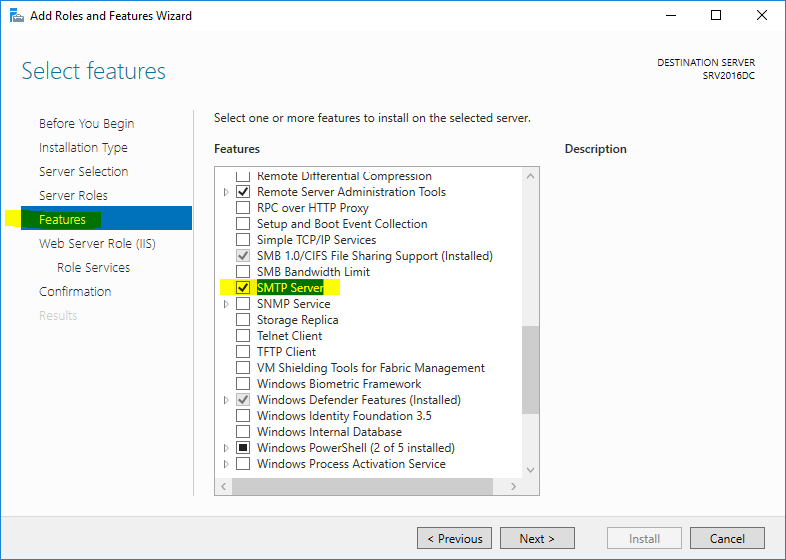Windows Server 2016 Lower Forest and Domain Functional Level
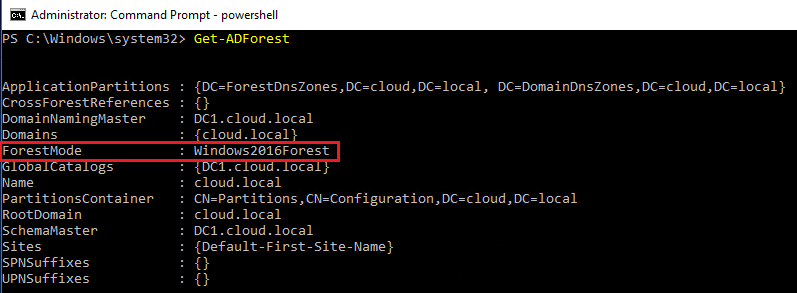
In my home lab environment, I had the need to change the functional levels of my forest and domain to do some testing work with Exchange 2010. I was running in native Windows Server 2016 mode in both the forest and the domain levels. According to the Exchange Supportability matrix, Exchange 2010 SP3 RU5 and later will support a Windows 2012 R2 Active Directory domain. So, I wanted to roll my AD environment back to Windows Server 2012 R2 levels. Let’s see how to in Windows Server 2016 lower Forest and Domain functional level to an earlier version.
Windows Server 2016 Change Forest and Domain Functional Level
Note You need to be logged in with an Enterprise Admin account.
To do this we use the Active Directory module commandlets in Powershell. Let’s look at the process. First, we want to verify what the current forest and domain levels are.
To verify the forest functional level, we use the Get-ADForest commandlet. It will display output similar to the following. As you can see, it is currently set to the Windows2016Forest level.
Get-ADForest
Now, let’s look at the domain functional level. To see that, we use the Get-ADDomain commandlet. The domain is set to Windows2016Domain level.
Get-ADDomain
Changing the functional levels
Forest
To change the forest functional levels, we use the Set-ADForestMode commandlet and pass the forest level that we want to change to as a parameter.
Set-ADForestMode -ForestMode <Desired forest level>
Here, I want to change the forest functional level to Windows 2012 R2. As you can see below, I set the ForestMode to Windows2012R2Forest and then specify the forest name. After that, you simply confirm the action.
Now, if we run the Get-ADForest commandlet, we see the Windows2012R2Forest level has been set.
Domain
The process to change the domain functional level is the same. We just use a different commandlet. To change the domain functional level, we use the Set-ADDomainMode commandlet.
Set-ADDomainMode -DomainMode <Desired domain level>
As you can see, like the forest functional level change, we pass in the desired domain level in the DomainMode parameter. Then we specify the domain and confirm the action.
After the operation completes, we can rerun our Get-ADDomain commandlet, and now we see the Windows2012R2Domain showing in the DomainMode.
Thoughts
We all remember the days when changing the Forest and Domain level was a scary thing in the sense that there was no way to revert back to a previous version without a lot of pain. Starting In Windows Server 2008 R2 and Windows Server 2012, you could lower the Forest and Domain functional level from 2012 to 2008 R2, or from 2008 R2 to 2008. The ability to do this continues with Windows Server 2016 Lower Forest and Domain Functional Levels. However, the ability to perform these major changes in Active Directory doesn’t mean we should use it on a whim. Lowering the level should be given serious thought just as raising the level does.


